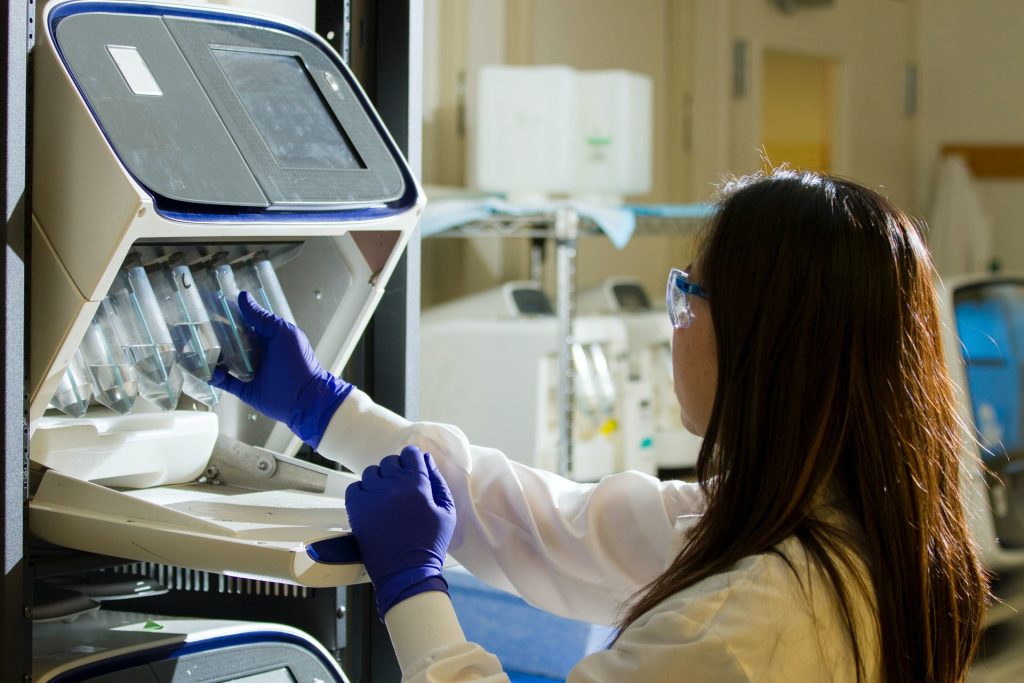
Pompe disease (PD) is an autosomal-recessively inherited neuromuscular disease that can be fatal if it is not diagnosed and treated early.1 Due to lack of acid alpha-glucosidase (GAA), there is progressive intracellular accumulation of glycogen, which can severely damage the muscles and heart.1
PD can present from early infancy into adulthood, with variable rates of disease progression.1 Severity is determined by age of onset, organ involvement, including the degree of muscle involvement (skeletal, respiratory, and cardiac), and rate of progression.1
Classification1
PD is classified into two groups: infantile and late-onset.
Infantile form:
• Classic infantile PD is most severe and rapidly progressive, and is characterised by prominent cardiomegaly, hepatomegaly, muscular weakness and hypotonia. Death results from cardiorespiratory failure in <1 year, if not treated.
• Infantile variant form (non-classic, in the <1-year group that has slower progression and less severe or absent cardiomyopathy).
Late-onset form:
• Childhood/juvenile or muscular variant (heterogeneous group) presenting later than infancy and typically excluding cardiomyopathy.
• Adult-onset form characterised by slowly progressive myopathy predominantly involving skeletal muscle and presenting as late as the 2nd – 6th decade of life.
Signs and symptoms
In infants, symptoms begin in the first months of life, with feeding problems, poor weight gain, breathing difficulties, profound hypotonia, and cardiomegaly.2 Many infants with PD also present with macroglossia.2
Kelly du Plessis, CEO and Founder of non-profit organisation, Rare Diseases SA (RDSA), says that the difficulty for both parents and healthcare professionals is that PD shows itself in many ways. “There is not one specific thing that you can pinpoint. My child, who is a PD sufferer, took longer to reach his milestones, and got slower as time progressed. It is better to be overcautious than under-cautious because early identification is critical to a positive outcome, and the damage done up until diagnosis cannot be undone.”
Du Plessis says that RDSA is also seeing many more adults being diagnosed with PD lately, and describes a few of the signs and symptoms: “In adults these include difficulty walking, particularly up stairs or inclines, recurring chest infections, being very fatigued, finding that their arms are getting weaker when they try to reach something on a top shelf, and falling over quite often owing to lower muscle tone and foot drop. Healthcare professionals need to be aware of this link with PD – because early intervention is critical to outcomes.”
Diagnosis
While making an early diagnosis is imperative to optimise disease management and outcomes,1 many patients experience a diagnostic odyssey.3
Monique Nel, Medical Advisor – Rare Diseases at Sanofi, says: “The diagnostic odyssey for PD can be quite long and complicated, as the symptoms can be similar to those of other conditions, and the disease is quite rare. The journey to diagnosis can take years, and many patients go through a battery of tests and specialists before finally receiving a correct diagnosis.”
In the United States it was reported that before implementation of newborn screening, there was, on average, a 3-month delay in diagnosing infantile-onset PD after the onset of symptoms.3 In late-onset PD, symptoms may begin any time from infancy to adulthood.3 In paediatric onset cases, on average: symptom onset occurs at approximately 6 years of age, yet diagnosis is generally made around 18 years of age, with a potential 12-year delay in diagnosis.3 The average age of symptom onset in adult-onset PD is 35 years, with a 7-year delay in diagnosis after symptom onset.3
Adds Nel: “In South Africa, we do enzyme activity testing via a dried blood spot test to measure the activity of the alpha-glucosidase enzyme. If the enzyme activity is low, it suggests that the individual may have PD. Genetic testing is currently performed abroad. This involves analysing a person’s DNA to look for mutations in the GAA gene. If two mutated copies of the GAA gene are found, it confirms a diagnosis of PD.”
Treatment
Enzyme replacement therapy (ERT) is available for all forms of PD, and has dramatically changed patient outcomes.3 This life-changing therapy is more effective when started before the onset of symptoms.3
Since the end of 2012, ERT (as alglucosidase alfa) has been registered with the South African Health Products Regulatory Authority (SAHPRA) for use in PD patients.1 Patients with infantile-onset PD who receive ERT have significantly prolonged survival, decreased cardiomegaly, and improved cardiac and skeletal muscle function.1 Cardiac response appears to be good, irrespective of the stage of disease at initiation of ERT, while the skeletal muscle response appears more variable.1 The best skeletal muscle response occurs when ERT is administered prior to skeletal muscle damage.1
Says Nel: “Early screening for PD and prompt treatment is crucial to prevent or delay the onset of disease complications. Therefore, healthcare providers must consider PD as a potential differential diagnosis when evaluating patients with muscle weakness, respiratory difficulties, and other related symptoms.”
Says du Plessis: “With medication, you see a difference in the patients within weeks, and they have a lot more energy. RDSA advocates as much as is necessary to get patients approved for medication, since this treatment changes their lives and quality of life – and in fact saves their lives. We need to do everything we can now, with the treatments we have today, to keep these patients as healthy as possible, so that they can benefit from the treatments that come tomorrow.”
For more information, visit: www.rarediseases.co.za
References
1. Bhengu, L, et al. Diagnosis and management of Pompe disease. South African Medical Journal 2014;104(4):273-274.
2. National Institute of Neurological Disorders and Stroke. Pompe disease. N.d. Available at: https://www.ninds.nih.gov/health-information/disorders/pompe-disease#, accessed 7 April 2023.
3. Ficicioglu, C, et al. Newborn screening for Pompe disease: Pennsylvania experience. Int J Neonatal Screen 2020;6(4):89.

